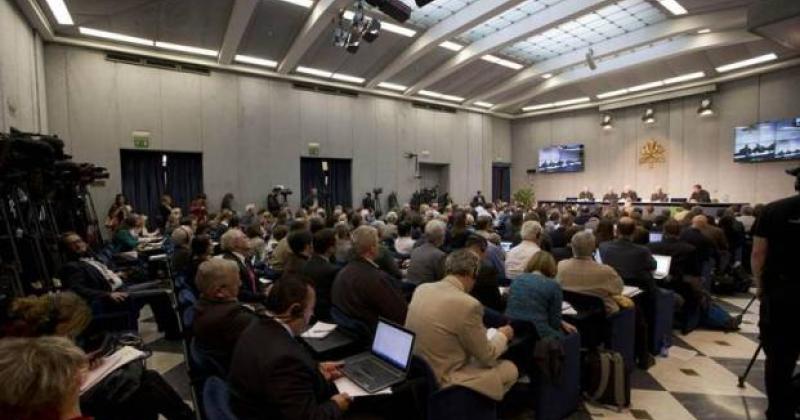Yesterday morning’s (Wednesday October 21) scandalous spoof story represents the latest turn of events at the Synod, following the Charamsa case and the publication of a letter with some inaccurate references to signatures by 13 cardinals. Vatican newspaper, L’Osservatore Romano has highlighted the manipulative attempt to falsely raise a hue and cry.
“The timing of this reveals an intent to manipulate and create unnecessary uproar.” This statement did not come from some commentator who is used to seeing conspiracies everywhere, it was published by L’Osservatore Romano, the Holy See’s newspaper. These are the closing words of a brief and anonymous note published by the newspaper, along with Fr. Federico Lombardi’s firm and categorical denial of the false report published by Italian newspaper Quotidiano Nazionale. And the timing is indeed crucial. Yesterday, the 13 language-based discussion groups presented their reports on the most controversial issues faced by the Synod, for example, the admission of remarried divorcees to the sacraments.
It is worth recalling that the timing of Mgr. Krzysztof Charamsa’s coming out, was also significant: it happened on 3 October, the very day before the Synod was due to start. Mgr. Charamsa, an official of the Congregation for the Doctrine of the Faith, publicly came out as gay in a restaurant in Rome, with his partner at his side. Charamsa announced he is publishing a book about his experience. The purpose of his coming out did not seem to just be an attempt to bring to the attention of the assembly of bishops an issue that was not on the list of topics for discussion. It also showed the Vatican in a negative light yet again.
Then, at the start of the second week of the Synod, a letter was published containing the signatures of 13 cardinals which was apparently addressed and delivered to the Pope. The alleged text carrying the cardinals’ signatures was published by Vatican specialist Sandro Magister, of Italian news magazine L’Espresso, who has links to the more rigorist cardinals. In the letter, Synod Fathers expressed their suspicions that the Synod was being manipulated in favour of more open approaches, as a result of the Pope’s choices regarding procedure. Having received it, Francis addressed Synod Fathers, urging them to steer clear of a “hermeneutics of conspiracy”, as reported by the Editor-in-chief of Italian Jesuit periodical La Civiltà Cattolica, Antonio Spadaro.
The contents of the letter along with the names of the individuals who signed it, must have been obtained from a highly reliable source and yet they turned out to be false. The publication of the letter therefore seemed like some sort of an “operation” to tarnish the Synod. Four of the supposed signatories – prominent cardinals such as the archbishops of Milan and Paris, the Synod Rapporteur and the Major Penitentiary – denied having signed the letter. One of the men who admitted he had signed it, Cardinal George Pell, gave the following statement to French newspaper Le Figaro: “None of the thirteen signatories leaked it, I’m quite sure. It was in their interests for the document to remain confidential.” And yet, it is evident, from the author of the supposed scoop and the text published by L’Espresso – a draft version, not the definitive text and a list of names, some of which were false – that the leak came from the circle of people that had known about this initiative for some time, supported it and were involved, possibly because they had been asked for an opinion or advice. That is to say, someone who had not received the final draft or the definitive list of signing parties.
Yesterday morning’s scandalous spoof story represents the latest turn of events in the last three weeks of Synod meetings. L’Osservatore Romano speaks of an “intent to manipulate” and besides the timing, the serious nature of the false report about the Pope’s alleged brain tumours naturally raises questions, even though the tumour was described as benign and curable. “It was a way to undermine authority at a moment when the attention of so many people is focused on him, both inside and outside the Church,” a prelate from the Secretariat of State said.
